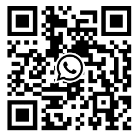When discussing the Internet of Things (IoT) analysis, people often think of artificial intelligence (AI) and machine learning (ML). However, the most basic form of IoT data analysis is the detection of anomalies and trends. In a direct sense, real-time analysis in the Internet of Things looks at the data to see if the statistics have exceeded the established threshold. These thresholds provide better visibility, enabling businesses to respond to changes quickly. The time-series approach requires large amounts of data and examines multiple variables to determine if any patterns exist. By exploring these trends, businesses can be:
· Open up new sources of income
· Solve operational problems
· Recognize the areas for improvement
IoT data analysis can be divided into two types:
· Data on the equipment
· Data generated by the device
The former usually refers to health, safety, location, and maintenance. For example, if there is a battery-powered sensor on site, it is crucial to understand the power state of the device. If it is a wireless or cellular-based device, the signal strength will be correlated. An example of data generated by a device is a temperature sensor that tracks the internal environment of a refrigerated vegetable cart. We can monitor this data to prevent the product from spoiling and thus avoid potential revenue losses.
The Internet of Things analysis has six elements:
· Capture: The IoT devices will collect data and process it in a cloud environment.
· Rationalization: This process is very helpful in the cellular environment. For example, if the device sends the same temperature reading every ten seconds, the cellular data will be wasted because it should only be sent when an exception occurs.
· Conversion: Convert the data of one business application into a form available to another business application.
· Event flow processing: techniques that help users detect overthreshold or match statistical patterns and respond quickly.
· Standardization: As part of the data choreography, this helps customers understand the data that gets into their IoT analytics platform. Enable them to learn more about their products and drive innovation.
· Visualization: Making the analysis results easy to understand. You can use visualization techniques such as dashboards to simplify demonstrations.
Data generated from the telematics device on the compact tractor and loader is sent to the data coordinator, which transfers the data to the resource planning system. Customers can then use this data to track the performance and maintenance levels of the device engine in the product lifecycle management application. Customers can also send data to a dealer network app, and data thresholds can be used for theft purposes, for example, why the vehicle starts at midnight, why away from location, etc.
Contact: Qui
Phone: 18146178586
Tel: 18146178586
Email: qui@zonewu.com
Add: 1501-3, Building F03, Phase III, Software Park, Jimei District, Xiamen City, Fujian Province, China
